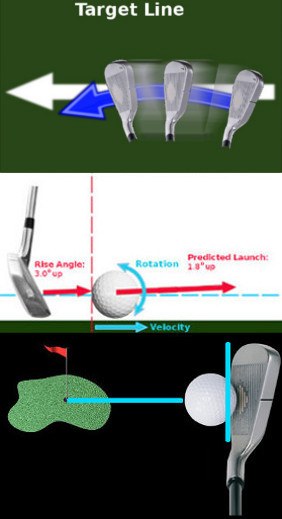
If you are interested in what low compression golf balls have to offer, the next step is to think about what kind of player you are. While no two players are alike, there are certainly ‘types’ of golfers who can be lumped together for the purposes of narrowing down equipment choices. The final decision needs to be based upon your own game and your preferences, but the task of zeroing in on a type of ball can be helped along if you are willing to think about your overall golfing profile.
The points below highlight characteristics which are typically shared by golfers who will benefit from low compression golf balls.
- Those with a relatively slow swing speed. If you struggle to generate much swing speed off the tee with your driver, you are right in the middle of the target market for low compression balls. Since these golf balls are easier to compress, they don’t ask the player to deliver as much power to the hitting area. If you have a high swing speed, you can compress a firmer ball, and you don’t need to worry about shopping in this category (most likely). Fortunately, you don’t even need to know your actual swing speed, as you can use your average driving distance for a close approximation. If you usually hit your drives less than 225-yards, you should strongly consider a low compression ball. Those who hit the ball between 225- and 250-yards with the driver should be open to this idea, but other kinds of balls should be considered, as well. Golfers with an average driving distance of more than 250-yards will likely want to look elsewhere.
- Players who struggle to get the ball off the ground. There isn’t much in golf quite as frustrating as having trouble getting the ball airborne. Even if you don’t hit the ball perfectly on line, it still feels better to hit it in the air than to run it along the turf. If you’re having trouble getting the ball up into the sky, a low compression ball may help. The ball itself won’t help you make clean contact, of course, but it can help the ball climb once you get it started. The higher spin rate you are likely to enjoy will provide lift, so your overall ball flight will be higher. With a higher ball flight, you’ll have an easier time getting over things like water hazards and bunkers, and you should be able to stop your shots more quickly, as well.
- Golfers with scores in the 100s. Sometimes, all you need to do is look at your average score to figure out what kind of ball you should be using. If you are currently shooting scores in the 100s, a low compression ball is a viable option. Even if you occasionally move your score down into the 90s, don’t ignore what you might gain through the use of this kind of ball. Also, don’t worry that using a low compression model is going to limit your growth as a player. You can keep developing your skills, and if necessary, you can move to a different type of ball later on.
You probably have a good idea already of whether or not your game could benefit from a low compression golf ball. Unless you are a powerful player with a relatively low handicap – in which case, you likely wouldn’t be thinking about a low compression ball to start with – you should at least remain open to testing this idea.





